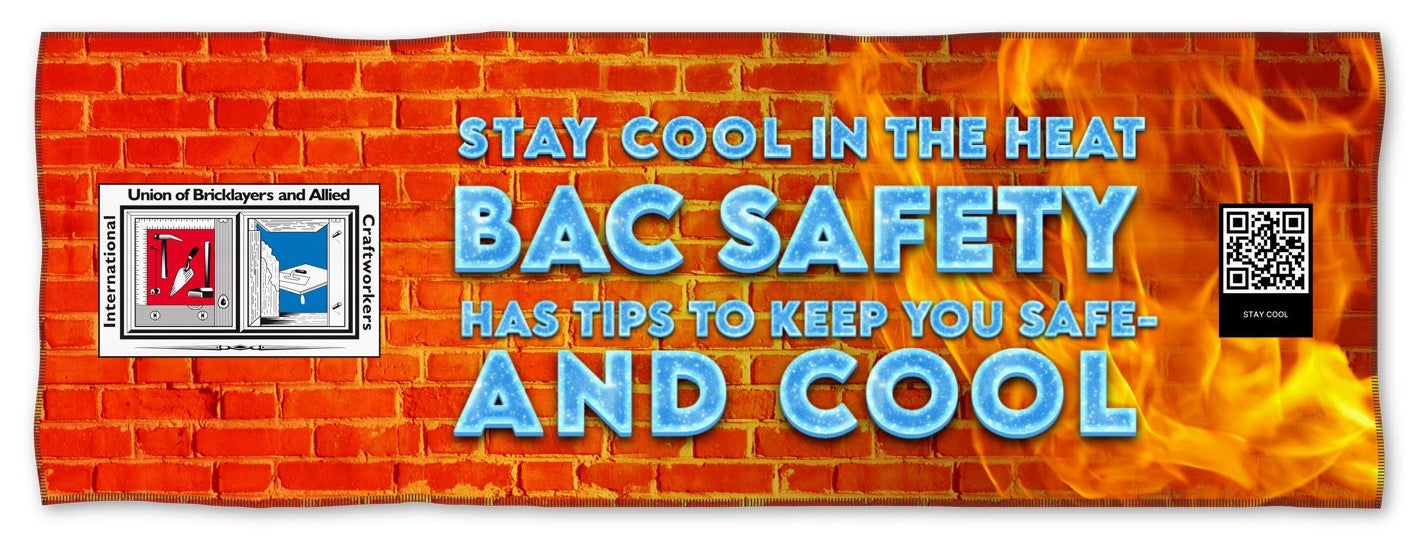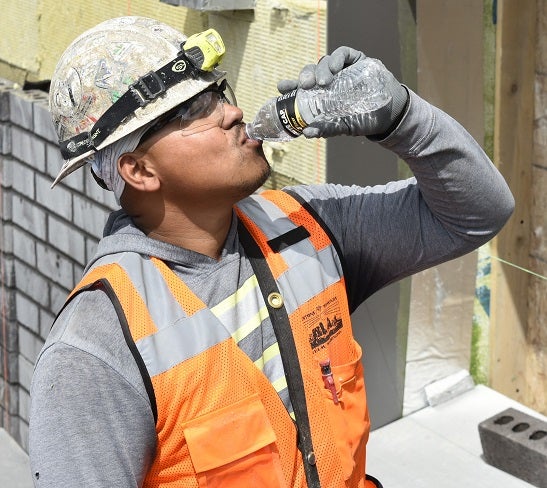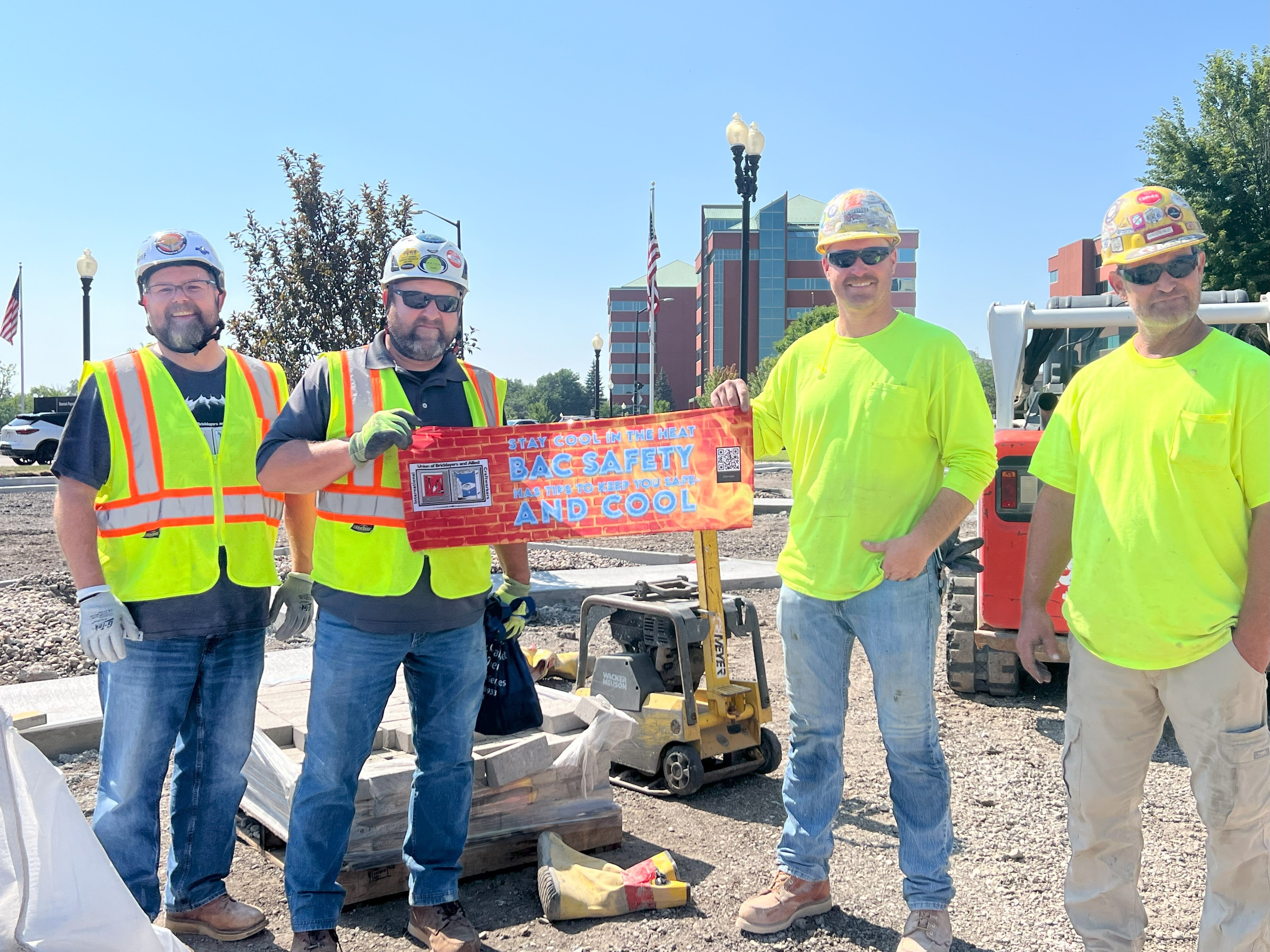
Heat is a serious hazard for bricklayers and allied craftworkers. BAC members do heavy work and are often in hot environments, including both outdoors n hot weather and indoors with limited ventilation or near sources of radian heat. Wearing necessary PPE to protect against hazards other than heat can also increase body temperature. Construction workers across the industry face a higher risk of dying at work from heat than other workers do. To learn more about the risks of heat-related illnesses, click here.
The good news is that there are steps that can be taken to alleviate the heat while working. Rest, Water, Shade can help tremendously.
-
Water: Cool drinking water should be made available to you
 near your working area. You should drink at least one cup (8oz) of water every 20 minutes and for longer days that you are exposed to heat you should drink beverages containing electrolytes. Your body loses salt and electrolytes that your body needs when you sweat.
near your working area. You should drink at least one cup (8oz) of water every 20 minutes and for longer days that you are exposed to heat you should drink beverages containing electrolytes. Your body loses salt and electrolytes that your body needs when you sweat. - Rest: When heat stress is high, employers should require workers to take breaks to recover from the heat. The amount of rest and frequency depends on the temperature you are working in, the physical activity level, and also your personal risk factors. Skipping breaks in not safe as your body’s core temperature rises it needs time to cool down.
- Shade: When taking breaks you should try to move to a shaded area, away from the heat/sun. You need time to recover from the heat. Heat related illness can happen on the job and knowing the signs can be life saving for you or your coworkers. Click here to learn more about heat-related illnesses, signs, and first-aid.
 Planning is crucial to mitigating heat related illness. A Heat Illness Prevention Plan should be created by your employer. Click here to learn more about heat-illness prevention.
Planning is crucial to mitigating heat related illness. A Heat Illness Prevention Plan should be created by your employer. Click here to learn more about heat-illness prevention.
Making sure that all BAC members are protected from the heat and staying cool is a primary focus. Succumbing to a heat related injury can be life changing and can lead to serious injury or potential death. Check out the resources below to learn more. If you are not already a member of the BAC, join now.
